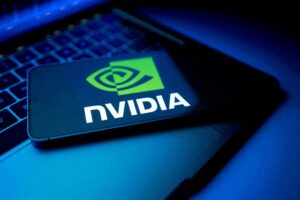
Investing.com — Here is your Pro Recap of the top takeaways from Wall Street analysts for the past week.
InvestingPro subscribers always get first dibs on market-moving AI analyst comments. Upgrade today!
Autodesk
What happened? On Monday, DA Davidson upgraded Autodesk (NASDAQ:ADSK) to Buy with a $375 price target.
*TLDR: DA Davidson upgrades Autodesk to BUY. Efficiency drives explosive profit growth.
What’s the full story? DA Davidson slams the upgrade button on Autodesk, shifting it to BUY from NEUTRAL. The firm’s laser focus on growth engines like ACC (NSE:ACC) and Fusion, paired with a relentless push for operational excellence, signals a trajectory toward top-tier performance.
Autodesk, long hailed as a top decile asset in the September 2024 initiation, is now sprinting toward its full potential. The firm sees no fluke here—this is execution meeting opportunity.
Margins? Sure, there’ll be noise from transaction model shifts, but DA Davidson isn’t sweating it. The firm’s calculus shows Autodesk has more than enough levers to pull for efficiency gains, paving the way for explosive profit growth in the coming years. This isn’t hope—it’s a roadmap carved in the cold, hard data of a business finally firing on all cylinders.
Buckle (NYSE:BKE) up.
Datadog
What happened? On Tuesday, Guggenheim downgraded Datadog (NASDAQ:DDOG) to Sell with a $105 price target.
*TLDR: OpenAI shift risks Datadog revenue. Short-term pain, long-term recovery.
What’s the full story? The analysts see significant risk in the second half of the year as OpenAI, Datadog’s largest customer, shifts toward cost-efficient, in-house observability solutions. This move doesn’t reflect broader enterprise trends but rather OpenAI’s unique hypergrowth and infrastructure needs, which make third-party solutions impractical at scale. OpenAI appears to already be transitioning away from Datadog for log management, with plans to deprecate other functionalities like metrics and traces.
While Datadog may post strong OpenAI-driven results in Q2 (+25% revenue growth), Q4 could see growth slow to 17%, with a potential $150M revenue gap by 2026.
Longer term, Datadog’s robust product portfolio and category leadership position it for a return to high-teens growth and 25%+ free cash flow margins by 2027. However, near-term headwinds, including subdued IT budgets and slower-than-expected ramp from other AI-native customers, may hinder offsetting OpenAI’s impact quickly.
The analysts view these challenges as transitory but caution they could weigh on growth through 2026.
Microsoft
What happened? On Wednesday, Oppenheimer upgraded Microsoft (NASDAQ:MSFT) to Outperform with a $600 price target.
*TLDR: Microsoft’s AI growth captivates investors. Azure drives premium valuations.
What’s the full story? Oppenheimer believes Microsoft’s AI revenue trajectory will increasingly captivate investors as Azure’s growth remains robust. The cloud platform not only bolsters Microsoft’s valuation—much like AWS does for Amazon—but also offers significant upside as its AI revenue scales rapidly. The firm sees Microsoft as a long-term leader in AI software, with its stock not yet fully reflecting the potential for sustained AI growth or a reacceleration in Azure’s performance by FY26.
The firm also highlights Microsoft’s rare ability to deliver a Rule of 60 business profile—combining growth and profitability—at an unprecedented scale. This unique positioning, Oppenheimer argues, justifies premium valuations.
As Microsoft continues to dominate the software industry with its AI capabilities, the firm anticipates growing investor confidence in its ability to sustain both innovation and financial performance.
AMD
What happened? On Thursday, HSBC upgraded AMD (NASDAQ:AMD) to Buy with a $200 price target.
*TLDR: HSBC bullish on AMD’s AI upside. Market misprices explosive potential.
What’s the full story? HSBC flips the script on AMD, pivoting from bearish to bullish as the bank now sees a seismic upside in the chipmaker’s AI revenue by FY26. The bank’s revised forecast of $15.1bn—57% above consensus—signals a potentially explosive trajectory, driven by the MI350 series’ higher-than-expected pricing premium. The MI400 rack architecture, set to launch in 2026, adds further fuel to the fire, though it’s too early to quantify.
One thing is clear: the market hasn’t fully priced in this upside, even after AMD’s 14% post-AI-day rally.
The bank’s previous skepticism—rooted in AMD’s seemingly lackluster AI GPU roadmap—is now shattered. HSBC’s upgraded outlook suggests a re-rating is imminent, as the MI350 and MI400 series position AMD as a dark horse in the AI arms race.
The narrative? AMD isn’t just playing catch-up; it’s gunning for the throne. Bet against it at your own peril.
AMC
What happened? On Friday, Wedbush upgraded AMC (NYSE:AMC) to Outperform with a $4 price target.
*TLDR: Wedbush upgrades AMC, bets on stability. Recovery grinds, revenue climbs, dilution ends.
What’s the full story? Wedbush is upgrading AMC to Outperform, betting on the theater chain’s crawl toward stability. The analysts point to a stronger release slate ahead, AMC’s premium screen dominance in North America, and its UK/EU expansion as catalysts. Debt drama fades too—AMC has deferred or repaid obligations due in 2026, and its share issuance spree is expected to end, clearing the way for cleaner financials.
AMC is trimming fat, closing underperforming theaters while juicing revenue at its top locations, where sales per screen already trend 3% above pre-pandemic levels. With box office consistency returning, Wedbush expects AMC’s EBITDA to cover interest costs, avoiding further dilution.
Let’s be clear: this isn’t a growth play—it’s a recovery grind. The analysts project mid-to-high single-digit box office growth through 2026, slowing to low-to-mid single digits thereafter.
Concessions and merchandise sales offer marginal upside, and AMC’s high-fixed-cost model means leverage improves as revenue climbs. With flat 2025 CapEx and upgrades requiring minimal investment, Wedbush pegs AMC at an 8x EV-to-EBITDA multiple, its historical norm in stable times.
It’s not flashy, but AMC is finally on firmer ground.
Related articles








